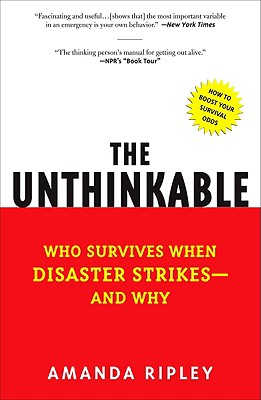With 38 state organizations and the International Association of Emergency Managers (IAEM) having some form of professional emergency management certification, the question arises: What is the point of all these professional certifications?
This will be the first in a series of posts exploring these certifications. The series will refer to the general idea of these certifications as CEM (certified emergency manager). It will start with understanding the purposes of any professional certification like a CEM. Next we will evaluate how successfully the CEM certifications meet these purposes. Then we can take a look into the consequences of the current CEM requirements. Finally, we will turn to the future by making some recommendations on how to develop better professional emergency manager certifications.
What do these Certifications Claim to do?
The first in the blog series is to talk about the purposes. After looking through all the public purpose statements of issuing organizations, three main categories were found as well as a few other commonalities. These purposes can be generalized to most certifications, as any certification serves at least one of these.
Raising the Profession/Professional Standards:
International Association of Emergency Managers:
“The International Association of Emergency Managers (IAEM) created the certification program for emergency managers to raise and maintain professional standards; it is a program to certify achievements within the profession.”
17 of the 39 CEM issuing organizations mentioned pushing the profession forward in some way, either on the recipient level or as a whole profession. Betterment of the profession is an admirable goal. To accomplish this, the certifications should push the recipient to continue to learn and grow in their understanding as well as share these insights with others inside and outside the profession. This objective is the most significant reason for having the certification in the field.
Recognition of Professional Achievement
Mississippi Civil Defense Emergency Management Association:
“The primary purpose serves to encourage personal improvement, recognize achievement and promote our State Association.”
Recognition of achievement is found in 17 of 39 certification objectives. The CEM frames what emergency managers should strive to become while providing positive reinforcement to the recipient for contributions to the field. Recognition generally is used as the greatest reason for recipients to pursue these certifications. However, it is important to note the sole purpose of an award is for recognition. As a result, recognition should never be the primary objective of a certification, merely a side benefit.
External Recognition
Colorado Emergency Managers Association
“The certification program is a peer evaluation program that measures an applicant’s education, training, experience and professional contribution. It provides an emergency manager the ability to be recognized for their abilities, increases marketability in career opportunities, aligns with the International Association of Emergency Managers certification program and increases the overall professional standards of the discipline.”
Emergency managers need to interact with many people outside of the field. In these interactions having some way to show you are a respected professional can be important. Hiring managers, journalists, and the general public are unlikely to know enough about emergency management to determine if the person is credible on the topic. One way to give credibility is through professional certifications. The commonality of these certifications giving designations (CEM, CO-CEM, PEM, ext) is one way they serve this purpose.
Other Notable
IAEM is noted directly by seven of the certifications, either stating the state level certification is a stepping stone to the IAEM certifications or saying that some degree of certification requirement is not necessary or unrealistic for emergency managers. The most common example is saying that a 4 year degree is not required for the state level certification. Only 2 of 38 states have degree requirements to get the certification. All other state certifications either do not require a degree or allow for a degree to be offset by years of experience.
Four state level CEM exist because of some law requirements. For example a state law requires county coordinators to be certified in Kansas. Kansas Certified Emergency Manager meets the requirement. Other states have similar requirements and the certification is primarily used to meet the law requirements, but does not preclude the CEM from trying to fill some of the other certification objectives.
Six certifications reference a minimum level of competency. These are in contrast to raising the professionalism field objective found in more CEM objectives. These minimums are saying that if an emergency manager has just this certification they can be expected to be able to perform well enough in the role. Many certifying organizations try to meet this need with a lower level certification (Associate emergency manager for example). These minimum level CEM are based on training almost exclusively. However these minimum level competency CEM have their own unique problems that will have to be covered at a future date.
Lastly 6 of 39 issuing organizations provided no justification or objective of their certification. For example South Dakota Emergency Management Association:
South Dakota Emergency Management Association (SDEMA):
“There has been a growing movement nationwide to provide for methods of professional certification of emergency managers (CEM) […] To address this potential need in South Dakota, the Executive Committee of the South Dakota Emergency […] decided to pursue formulating guidelines for emergency manager certification.”
SDEMA seems to have made their certifications because they saw the trend and thought they should have something as well. I would argue that any certification with no clear purpose is next to useless, but a deeper explanation is another post for some other day.
Final Thoughts
The objectives of emergency management certifications are all over the place. However, some commonalities can be found through all of them. They serve to push the field (and the professional) forward, recognize the effort of recipients, and give some credibility to recipients when interacting outside the field. Issues arise when organizations seem to not think through why they are issuing certifications or simply recreate the IAEM certifications.


